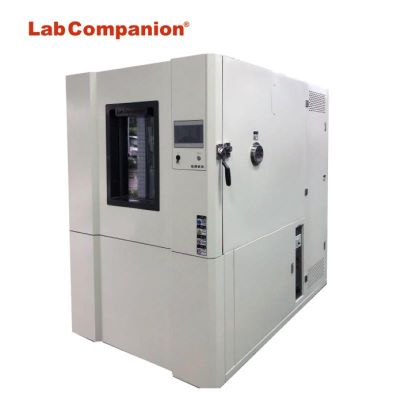November 20, 2024
Conduction Zone of Heat
Thermal conductivity
It is the thermal conductivity of a substance, passing from high temperature to low temperature within the same substance. Also known as: thermal conductivity, thermal conductivity, thermal conductivity, heat transfer coefficient, heat transfer, thermal conductivity, thermal conductivity, thermal conductivity, thermal conductivity.
Thermal conductivity formula
k = (Q/t) *L/(A*T) k: thermal conductivity, Q: heat, t: time, L: length, A: area, T: temperature difference in SI units, the unit of thermal conductivity is W/(m*K), in imperial units, is Btu · ft/(h · ft2 · °F)
Heat transfer coefficient
In thermodynamics, mechanical engineering and chemical engineering, the heat conductivity is used to calculate the heat conduction, mainly the heat conduction of convection or the phase transformation between fluid and solid, which is defined as the heat through the unit area per unit time under the unit temperature difference, called the heat conduction coefficient of the substance, if the thickness of the mass of L, the measurement value to be multiplied by L, The resulting value is the coefficient of thermal conductivity, usually denoted as k.
Unit conversion of heat conduction coefficient
1 (CAL) = 4.186 (j), 1 (CAL/s) = 4.186 (j/s) = 4.186 (W).
The impact of high temperature on electronic products:
The rise in temperature will cause the resistance value of the resistor to decrease, but also shorten the service life of the capacitor, in addition, the high temperature will cause the transformer, the performance of the related insulation materials to decrease, the temperature is too high will also cause the solder joint alloy structure on the PCB board to change: IMC thickens, solder joints become brittle, tin whisker increases, mechanical strength decreases, junction temperature increases, the current amplification ratio of transistor increases rapidly, resulting in collector current increases, junction temperature further increases, and finally component failure.
Explanation of proper terms:
Junction Temperature: The actual temperature of a semiconductor in an electronic device. In operation, it is usually higher than the Case Temperature of the package, and the temperature difference is equal to the heat flow multiplied by the thermal resistance. Free convection (natural convection) : Radiation (radiation) : Forced Air(gas cooling) : Forced Liquid (gas cooling) : Liquid Evaporation: Surface Surroundings Surroundings
Common simple considerations for thermal design:
1 Simple and reliable cooling methods such as heat conduction, natural convection and radiation should be used to reduce costs and failures.
2 Shorten the heat transfer path as much as possible, and increase the heat exchange area.
3 When installing components, the influence of radiation heat exchange of peripheral components should be fully considered, and the thermal sensitive devices should be kept away from the heat source or find a way to use the protective measures of the heat shield to isolate the components from the heat source.
4 There should be sufficient distance between the air inlet and the exhaust port to avoid hot air reflux.
5 The temperature difference between the incoming air and the outgoing air should be less than 14 ° C.
6 It should be noted that the direction of forced ventilation and natural ventilation should be consistent as far as possible.
7 Devices with large heat should be installed as close as possible to the surface that is easy to dissipate heat (such as the inner surface of the metal casing, metal base and metal bracket, etc.), and there is good contact heat conduction between the surface.
8 Power supply part of the high-power tube and rectifier bridge pile belong to the heating device, it is best to install directly on the housing to increase the heat dissipation area. In the layout of the printed board, more copper layers should be left on the board surface around the larger power transistor to improve the heat dissipation capacity of the bottom plate.
9 When using free convection, avoid using heat sinks that are too dense.
10 The thermal design should be considered to ensure that the current carrying capacity of the wire, the diameter of the selected wire must be suitable for the conduction of the current, without causing more than the allowable temperature rise and pressure drop.
11 If the heat distribution is uniform, the spacing of the components should be uniform to make the wind flow evenly through each heat source.
12 When using forced convection cooling (fans), place the temperature-sensitive components closest to the air intake.
13 The use of free convection cooling equipment to avoid arranging other parts above the high power consumption parts, the correct approach should be uneven horizontal arrangement.
14 If the heat distribution is not uniform, the components should be sparsely arranged in the area with large heat generation, and the component layout in the area with small heat generation should be slightly denser, or add a diversion bar, so that the wind energy can effectively flow to the key heating devices.
15 The structural design principle of the air inlet: on the one hand, try to minimize its resistance to the air flow, on the other hand, consider dust prevention, and comprehensively consider the impact of the two.
16 Power consumption components should be spaced as far apart as possible.
17 Avoid crowding temperature sensitive parts together or arranging them next to high power consuming parts or hot spots.
18 The use of free convection cooling equipment to avoid arranging other parts above the high power consumption parts, the correct practice should be uneven horizontal arrangement.
